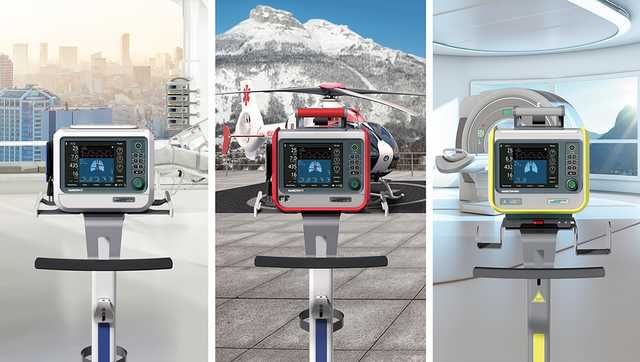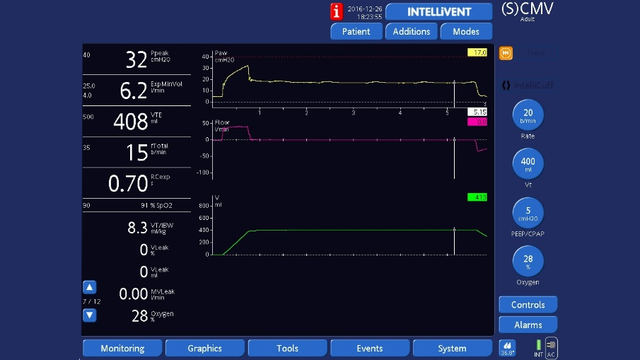
Autor: Simon Franz
Fecha: 14.07.2017

A pesar de que la idea de una presión meseta “segura” ya se está poniendo en tela de juicio, sigue siendo un tratamiento habitual para ajustar de forma individualizada la ventilación con protección pulmonar en pacientes con síndrome de dificultad respiratoria aguda (SDRA)
Debido a los componentes neumáticos sin válvula de los respiradores HAMILTON-C1/T1/MR1, el parámetro Pmeseta no se puede obtener realizando una maniobra de pausa inspiratoria. Sin embargo, Pmeseta sigue estando disponible como parámetro de monitorización y puede visualizarse en función del software del respirador.
| HAMILTON-C1/T1/MR1 versión de software anterior a 2.2.0 | HAMILTON-C1/T1/MR1 versión de software 2.2.0 o posterior |
|---|---|
| La presión al final de la inspiración siempre se muestra como Pmeseta. Tenga en cuenta que si hay presente un flujo al final de la inspiración, el parámetro Pmeseta que se muestre será mayor que el valor de Pmeseta real. | Pmeseta solo aparece si el flujo al final de la inspiración está próximo a cero. El valor de Pmeseta que se muestra puede seguir siendo superior al valor de Pmeseta real. |
La siguiente es una posible solución para calcular el valor de Pmeseta en situaciones donde el flujo al final de la inspiración no está próximo a cero o la presión al final de la inspiración medida parece inexacta:
Este cálculo depende de que la medición de Cestát sea precisa, lo que pone de manifiesto que no se está produciendo un esfuerzo del paciente significativo. El valor de Pinsp debe ser de aproximadamente 10 cmH2O.
Pmeseta = (VTE ml /Cestát ml/cmH2O) + PEEP cmH2O
Ejemplo
VTE: 450 ml; Cestát: 50 ml/cmH2O; PEEP: 8 cmH2O
(450 ml/50 ml/cmH2O) + 8 cmH2O = 17 cmH2O
Pmeseta = 17 cmH2O
∆P = 9 cmH2O
Otra ventaja es que se obtiene el valor de ∆P como un subproducto de los cálculos realizados. ∆P está estrechamente ligado a la supervivencia de pacientes con SDRA y, por tanto, posiblemente sea el parámetro más interesante
Dispositivos relevantes: HAMILTON-C1/T1/MR1 (todas las versiones de software)

ARDS is characterized by lung collapse and consolidation leaving just a small portion of aerated lung remaining, which is at risk of ventilator-induced lung injuries (baby-lung concept).

Airway driving pressure is associated with clinical outcomes in ARDS, post-surgical, and normal-lung patients, and is a measure of the strain applied to the respiratory system and the risk of ventilator-induced lung injuries. Evidence suggests we should keep driving pressure below 14 cmH2O. But how can we measure it?